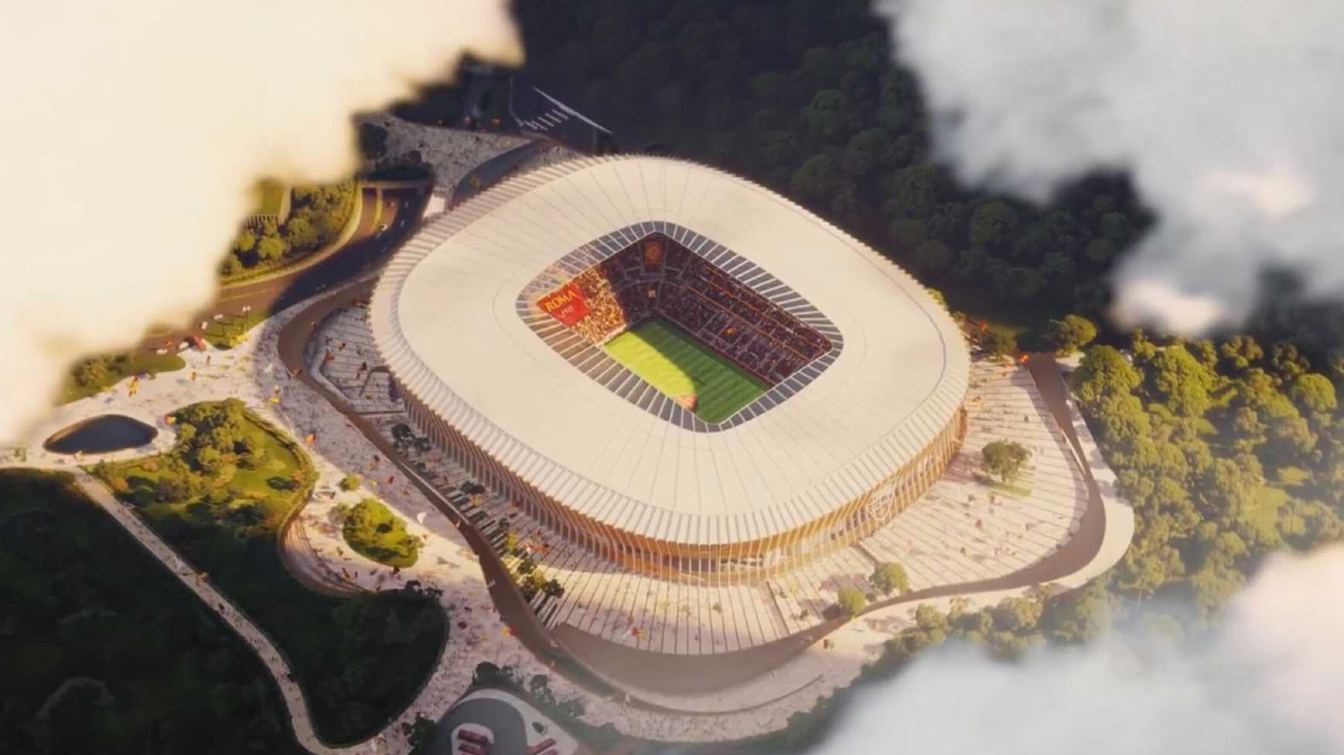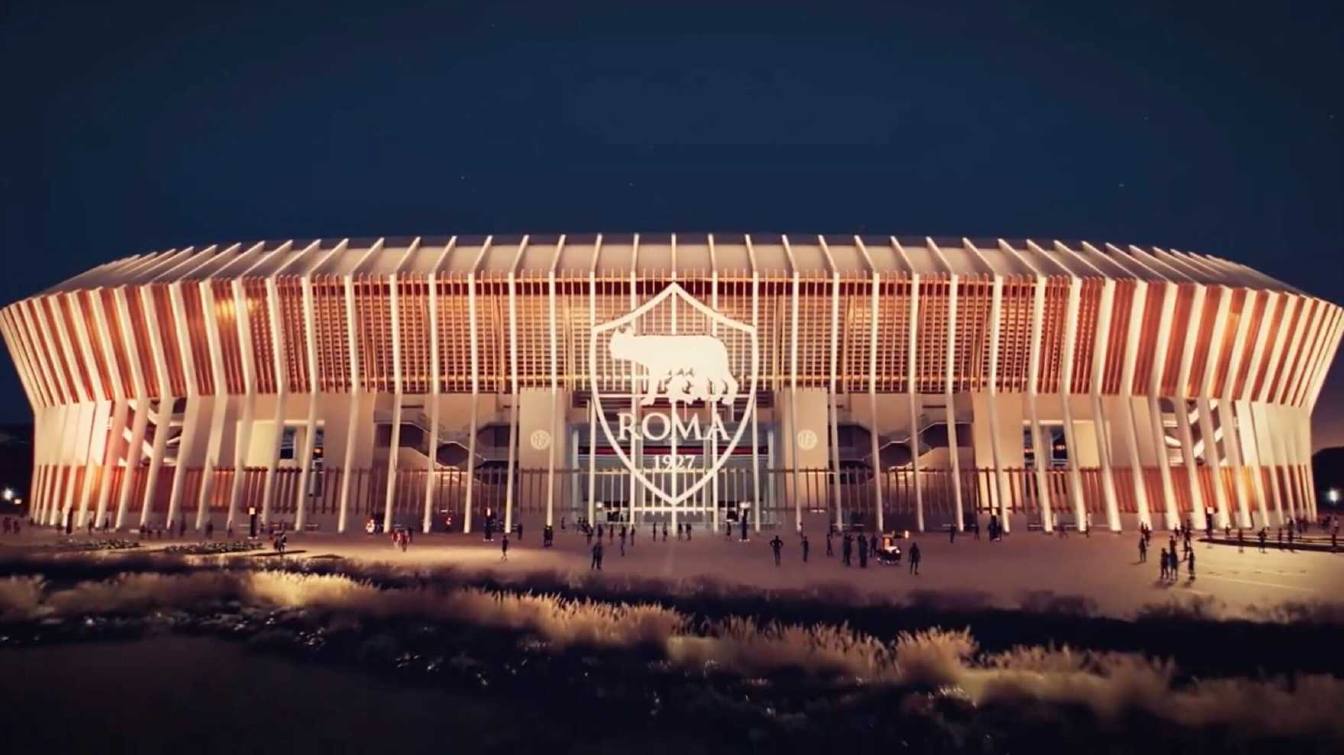Italy: AS Roma stadium project in final stages amid forest dispute
source: StadiumDB.com; author: Paulina Skóra
 The year 2025 is shaping up to be a critical one for AS Roma. The city of Rome has been eagerly awaiting the submission of the new stadium project, which is due no later than the end of February.
The year 2025 is shaping up to be a critical one for AS Roma. The city of Rome has been eagerly awaiting the submission of the new stadium project, which is due no later than the end of February.
Advertisement
On schedule, but at double the cost?
This marks a significant step toward the final phase, which involves resubmitting the project for review by various authorities. After the plans are presented, the Conference of Services will assess whether they meet the requirements outlined to AS Roma in recent months. If approved, international tenders for construction work, a process typically lasting six months, will need to be launched. If everything proceeds smoothly, the project could receive the green light by the end of 2025, keeping the original 2027 opening date on track.
However, the project’s costs have essentially doubled compared to the €570 million outlined in the feasibility study presented on April 3, 2022. The current total budget is estimated at around €1 billion. Additionally, the original concept has evolved into a more futuristic design, incorporating advanced eco-friendly materials, while the stadium’s capacity has been increased to approximately 62,000 seats. These adjustments include extra works required by the City Council to secure approval.
 © AS Roma
© AS Roma
AS Roma still faces familiar obstacles
The unresolved challenges remain the same: parking, road infrastructure, and a pedestrian-cycle bridge over Via Livorno. The plan stipulates that 50% of attendees must arrive via public transportation, with the other 50% using private vehicles. There’s also the contentious issue of a supposed forest, which has become a focal point of disagreement among opponents of the project, the City Council, and investors.
Regarding the forest, a consultant recently revisited an old study and presented it to prosecutor Stefano Pizza, who has commissioned a survey of the area’s boundaries. At the Pietralata site, where the stadium is planned, the presence of oak trees was identified as early as 1993. This was documented in a study titled Vegetation Map
of the Rome province, dated 2006. The study forms a crucial part of an expert report by agronomist Massimiliano Frattale, who confirmed the existence of 15,000 square meters — 1.5 hectares — of forest in the area where the stadium’s south stand is planned.
This classification designates the site as a forested area, which, under regional law no. 39 of 2002, grants it legal protection to preserve local flora and fauna. Oaks identified in 1993 remain present, along with other species cited by the agronomist, such as laurel, elm, and black walnut. Elderberry and black locust are also notably abundant. The report, commissioned by the Monti di Pietralata committee, has been added to the prosecutor’s investigation into the stadium’s approval process. The investigation, initiated over alleged falsification of official documents and currently without named suspects, centers on whether part of the 14-hectare construction site should have been classified as forested land.
 © AS Roma
© AS Roma
A forest or not? What happens next?
The agronomist’s report is pivotal to the investigation, as it is the first official confirmation of a forest’s existence on the site. Until now, no formal documentation of this nature had been provided. Following the report’s submission, the prosecutor tasked municipal authorities with marking the forest’s boundaries. This step precedes the appointment of another agronomist to independently verify the findings. If the prosecutor’s expert corroborates Frattale’s conclusions, questions will arise about why the city’s environmental department did not conduct its own survey before declaring the project of public interest.
Another document submitted to the prosecutor by the committee concerns the feasibility study reviewed by the Metropolitan City of Rome. In a February 2, 2022 report, director and geologist Alessio Argentieri noted: Based on extensive documentation, wooded and forested areas, pastures, and uncultivated lands are present.
Argentieri further specified: Opinions will only be issued for forested areas identified in the Regional Spatial Plan (Ptpr) or exceeding three hectares.
The question remains: would the director’s opinion on the project have changed if the site were classified as a forest? This is one of the key issues the investigation seeks to address.
Returning to Frattale’s report, the agronomist provides satellite images showing the area’s vegetation growth from 2001 to 2024, illustrating its current extent. The area under review has never been formally classified as a forest,
Frattale writes. However, based on the findings, it cannot be excluded from such classification under current laws.
Representing local residents, the consultant notes that the estimated 1.5 hectares is a conservative figure.
 © AS Roma
© AS Roma
Advertisement
 StadiumDB
StadiumDB